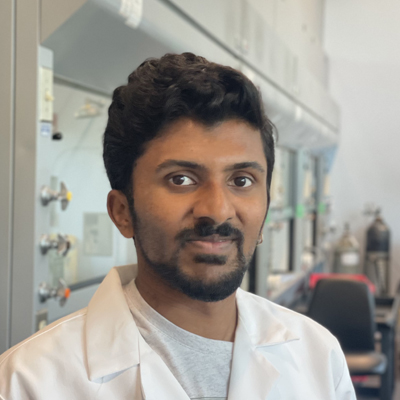
Rahul Subramaniam is an NIH Oxford-Cambridge Scholar and predoctoral fellow in the Section on Mechanics and Tissue Remodeling Integrating Computational & Experimental Systems (MATRICES) in NIBIB’s intramural research program. He is part of the NIH Oxford-Cambridge Scholars doctoral program, which is an accelerated and highly selective 4-year PhD program with 2 years of research at the NIH and 2 years at the University of Oxford or Cambridge in the UK. Only 20 students from around the country are selected as Scholars each year.
Rahul received his B.A. from Harvard University in 2023 with a double major in Biomedical Engineering and Physics, where he wrote his undergraduate thesis in the lab of Prof. William Shih about designing and fabricating self-assembling DNA origami nanostructures. His doctoral advisors are Dr. Manu Platt at NIBIB and Prof. Dame Molly Stevens at the University of Oxford, and his graduate thesis research centers around using tissue engineering and 3D bioprinting to model large artery vasculopathy in sickle cell disease. Outside of the lab, Rahul’s hobbies include climbing, cycling and film photography.
Stroke is a common and devastating complication seen in children with sickle cell disease (SCD), with approximately 11% of children with SCD experiencing an overt stroke by age 20 and an additional 37% experiencing a silent stroke that causes cognitive damage but no overt symptoms. The physiological causes of stroke in SCD remain incompletely understood, as well as what drives such marked patient-to-patient variation in stroke incidence. Studies from literature have shown prevalent multicellular aggregates composed of erythrocytes, leukocytes and platelets circulating in the blood of individuals with SCD, and past Platt Lab research has shown arterial remodeling in carotid arteries of mice with SCD. Rahul’s interests lie in using tissue engineering and 3D bioprinting to simulate the interplay between these two processes on a patient-specific basis. In doing so, he hopes to shed light on how SCD damages large arteries and increases stroke risk in young individuals.
